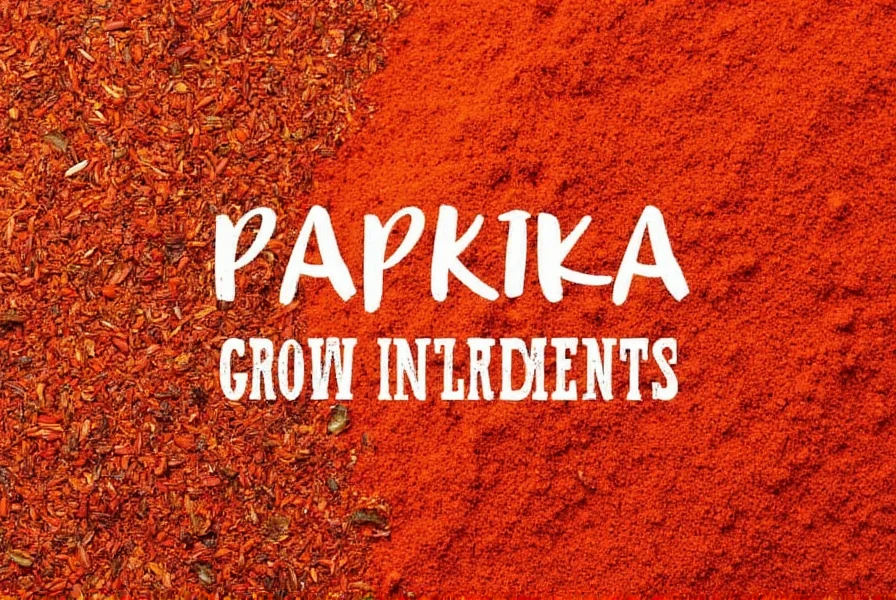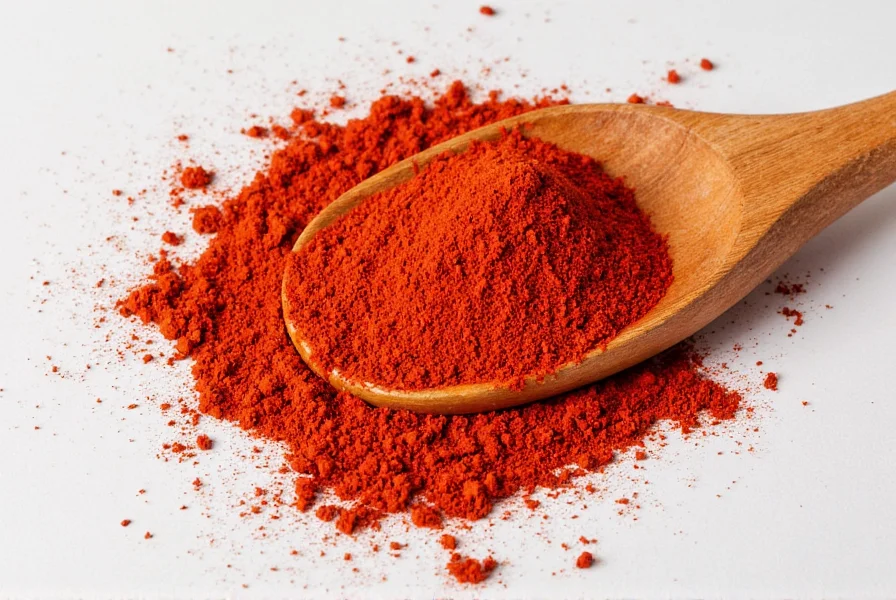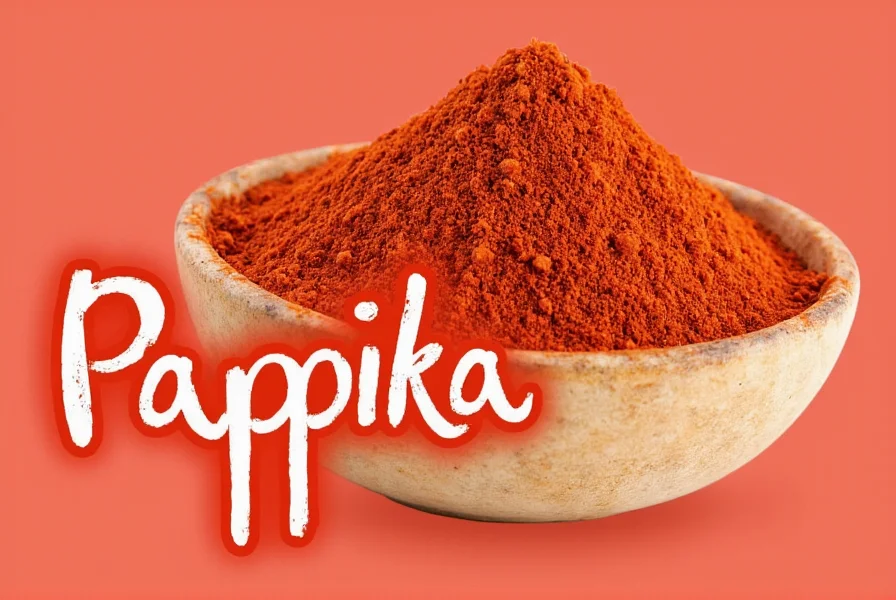As a versatile spice used worldwide, paprika brings vibrant color and distinctive flavor to countless dishes. Understanding what paprika pairs well with can transform your cooking from ordinary to extraordinary. This comprehensive guide explores the perfect paprika combinations that work across various cuisines and cooking methods.
Understanding Paprika Varieties and Their Flavor Profiles
Before exploring paprika pairings, it's essential to understand the different types of paprika and how their unique characteristics affect food combinations. The three main varieties include:
| Paprika Type | Flavor Profile | Best Pairing Applications |
|---|---|---|
| Sweet Paprika | Mild, slightly sweet, earthy | Fish, chicken, light sauces, deviled eggs |
| Smoked Paprika | Rich, smoky, complex | Barbecue, roasted vegetables, beans, stews |
| Hot Paprika | Spicy, pungent, varying heat levels | Chili, spicy sausages, robust meat dishes |
Each variety interacts differently with other ingredients, making certain paprika and food combinations more successful than others. Hungarian paprika, considered the gold standard, offers eight distinct varieties ranging from mild to hot, while Spanish paprika (pimentón) focuses on smoked and sweet varieties.
The Science Behind Successful Paprika Pairings
Paprika's chemical composition explains why certain paprika and ingredient combinations work so well. The spice contains capsaicinoids (in hot varieties), carotenoids that provide color, and volatile compounds that create its distinctive aroma. These elements interact with other foods through:
- Fat solubility - Paprika's flavor compounds dissolve in fats, making oil, butter, and animal fats ideal carriers
- Maillard reaction enhancement - Paprika accelerates browning reactions in meats and vegetables
- Acid balance - The spice works particularly well with acidic ingredients like tomatoes and vinegar
- Complementary flavor compounds - Shares chemical components with garlic, onions, and certain meats
Top Paprika Pairing Categories
Paprika and Proteins
Chicken represents perhaps the most classic paprika pairing, especially in Hungarian goulash and Spanish paprika chicken. The spice's earthy notes complement poultry's mild flavor without overwhelming it. For beef dishes, smoked paprika creates a beautiful synergy with slow-cooked brisket or hamburger seasoning. When considering paprika and fish combinations, milder sweet paprika works best with delicate white fish, while smoked paprika enhances heartier fish like salmon.

Paprika and Vegetables
Root vegetables like potatoes, carrots, and parsnips form excellent paprika pairings, especially when roasted. The natural sugars in these vegetables caramelize beautifully with paprika's compounds. Bell peppers create a harmonious paprika and vegetable combination since they share botanical origins (both from the Capsicum family). Tomatoes provide the perfect acidic counterpoint to paprika's earthiness in dishes like Spanish romesco sauce and Hungarian lecsó.
Paprika and Legumes
Beans and lentils absorb paprika's flavor exceptionally well, making them ideal for vegetarian paprika combinations. Red lentils with smoked paprika create a deeply flavorful soup, while white beans with sweet paprika work beautifully in Mediterranean dishes. The fiber in legumes helps distribute paprika's flavor compounds evenly throughout the dish.
Paprika and Complementary Spices
Certain spice combinations with paprika create culinary magic. The classic paprika and cumin pairing appears in Hungarian and Middle Eastern cuisines, while paprika with garlic powder forms the base of many dry rubs. For complex flavor profiles, try these successful combinations:
- Sweet paprika + garlic + onion powder + black pepper (universal seasoning blend)
- Smoked paprika + cumin + coriander + oregano (Southwestern/Mexican profile)
- Hot paprika + caraway + marjoram + thyme (Hungarian goulash seasoning)
Regional Approaches to Paprika Pairings
Hungarian Cuisine: Paprika as Star Ingredient
In Hungary, paprika isn't just a seasoning—it's a culinary cornerstone. Traditional Hungarian dishes showcase paprika and meat combinations like:
- Goulash (paprika with beef, onions, potatoes)
- Chicken paprikash (paprika with chicken, sour cream, dumplings)
- Lecsó (paprika with tomatoes, peppers, onions)
Hungarian cooks typically add paprika late in the cooking process to preserve its flavor, unlike Spanish techniques that often bloom paprika in oil at the beginning.
Spanish Cuisine: Smoked Paprika Mastery
Spanish cuisine features paprika and smoked flavor combinations prominently. Pimentón (Spanish smoked paprika) appears in:
- Patatas bravas (paprika with potatoes, tomato sauce)
- Chorizo (paprika with pork, garlic, vinegar)
- Paella (paprika with seafood, saffron, rice)
Spanish chefs often bloom smoked paprika in olive oil to release its full flavor potential before adding other ingredients.
Practical Tips for Perfect Paprika Pairings
Timing Matters: When to Add Paprika
The timing of paprika addition significantly affects your paprika and dish outcome:
- Early addition: Blooms flavor in oil but risks bitterness if overheated
- Middle cooking: Allows flavor integration without losing potency
- Finishing touch: Preserves vibrant color and fresh flavor (best for sweet paprika)
Hot paprika generally withstands longer cooking times better than sweet varieties, which can become bitter when exposed to high heat for extended periods.
Avoiding Common Paprika Pairing Mistakes
Even experienced cooks make these paprika combination errors:
- Using old, faded paprika (loses potency after 6-12 months)
- Adding paprika to smoking-hot oil (causes bitterness)
- Overpowering delicate ingredients with strong paprika varieties
- Mixing different paprika types without understanding their flavor profiles
Storage Tips to Maintain Paprika Quality
Proper storage ensures your paprika maintains its pairing potential:
- Keep in airtight container away from light and heat
- Refrigerate for extended freshness (up to 2 years)
- Buy small quantities frequently for peak flavor
- Perform the sniff test—fresh paprika has a vibrant, sweet aroma

Simple Recipes Showcasing Perfect Paprika Combinations
Roasted Paprika Potatoes
Toss baby potatoes with 2 tablespoons olive oil, 1½ teaspoons sweet paprika, 1 teaspoon garlic powder, ½ teaspoon black pepper, and salt. Roast at 400°F (200°C) for 35-40 minutes until crispy. The paprika and potato combination creates a beautifully caramelized exterior with a fluffy interior.
Smoked Paprika Chicken Thighs
Combine 1 tablespoon smoked paprika, 2 teaspoons garlic powder, 1 teaspoon onion powder, ½ teaspoon cayenne (optional), salt, and black pepper. Rub onto chicken thighs and sear skin-side down in hot oil until crispy. Finish in oven at 375°F (190°C) for 25 minutes. This paprika and chicken pairing delivers deep, complex flavor.
What to Do When You Run Out of Paprika
If you need a paprika substitute, consider these alternatives based on what paprika brings to your recipe:
- For color: Tomato paste + pinch of cayenne
- For mild flavor: Pimiento peppers blended with a touch of cayenne
- For smokiness: Chipotle powder (use sparingly—3x hotter)
- For heat: Cayenne pepper (½ teaspoon cayenne = 1 tablespoon hot paprika)
Remember that no substitute perfectly replicates paprika's unique combination of color, flavor, and mild heat, which is why understanding proper paprika pairings helps you maximize this spice's potential when you have it available.
Conclusion: Mastering Paprika Combinations
Understanding what paprika pairs well with unlocks endless culinary possibilities. Whether you're creating Hungarian goulash, Spanish patatas bravas, or simply seasoning roasted vegetables, the right paprika and ingredient combination can elevate your dishes from ordinary to exceptional. By considering paprika varieties, cooking techniques, and regional traditions, you can develop an intuitive sense for successful paprika pairings that delight your palate and impress your guests. Remember that the best paprika combinations balance flavor, color, and texture while respecting the unique characteristics of this versatile spice.
Frequently Asked Questions
What is the best meat to pair with paprika?
Chicken represents the most versatile paprika pairing, especially with sweet or smoked varieties. The mild flavor of chicken absorbs paprika's characteristics beautifully without competition. For heartier meats, beef brisket and pork shoulder work exceptionally well with smoked paprika, while sweet paprika complements lighter proteins like fish and shrimp. Traditional Hungarian cuisine often pairs paprika with pork in dishes like lecsó and various stews.
Can I use different paprika varieties together?
Yes, combining paprika varieties can create complex flavor profiles. A common professional technique is blending 2 parts sweet paprika with 1 part smoked paprika for balanced flavor and color. When experimenting with paprika combinations, start with small ratios (like 3:1) and adjust to taste. Avoid mixing hot paprika with other varieties unless you want to increase heat levels, as hot paprika can dominate more subtle flavors.
Why does my paprika taste bitter sometimes?
Bitterness in paprika usually occurs when it's exposed to high heat for too long. Sweet paprika varieties are particularly susceptible to burning. To prevent bitter paprika flavors, never add paprika directly to smoking-hot oil—instead, bloom it in warm (not hot) oil for 30-60 seconds before adding other ingredients. Alternatively, add sweet paprika toward the end of cooking. Old or stale paprika can also develop bitter notes, so check your spice's freshness if bitterness persists with proper cooking techniques.
What vegetables pair best with paprika?
Root vegetables like potatoes, carrots, and parsnips create excellent paprika pairings, especially when roasted. Bell peppers form a natural paprika combination since they share botanical origins. Tomatoes provide the perfect acidic counterpoint to paprika's earthiness in dishes like Spanish romesco sauce. Onions and garlic also work exceptionally well with paprika, forming the flavor base for countless dishes worldwide. For unique combinations, try paprika with roasted cauliflower or Brussels sprouts.
How can I enhance paprika flavor in my dishes?
To maximize paprika flavor, bloom it in warm oil or fat for 30-60 seconds before adding other ingredients—this releases its fat-soluble flavor compounds. Pairing paprika with acidic ingredients like tomatoes or vinegar creates a flavor synergy that enhances its characteristics. Adding paprika to dishes containing garlic, onions, or umami-rich ingredients like mushrooms also amplifies its flavor. For dried paprika, rehydrating it slightly with warm water or broth before use can intensify its flavor profile in sauces and stews.











 浙公网安备
33010002000092号
浙公网安备
33010002000092号 浙B2-20120091-4
浙B2-20120091-4